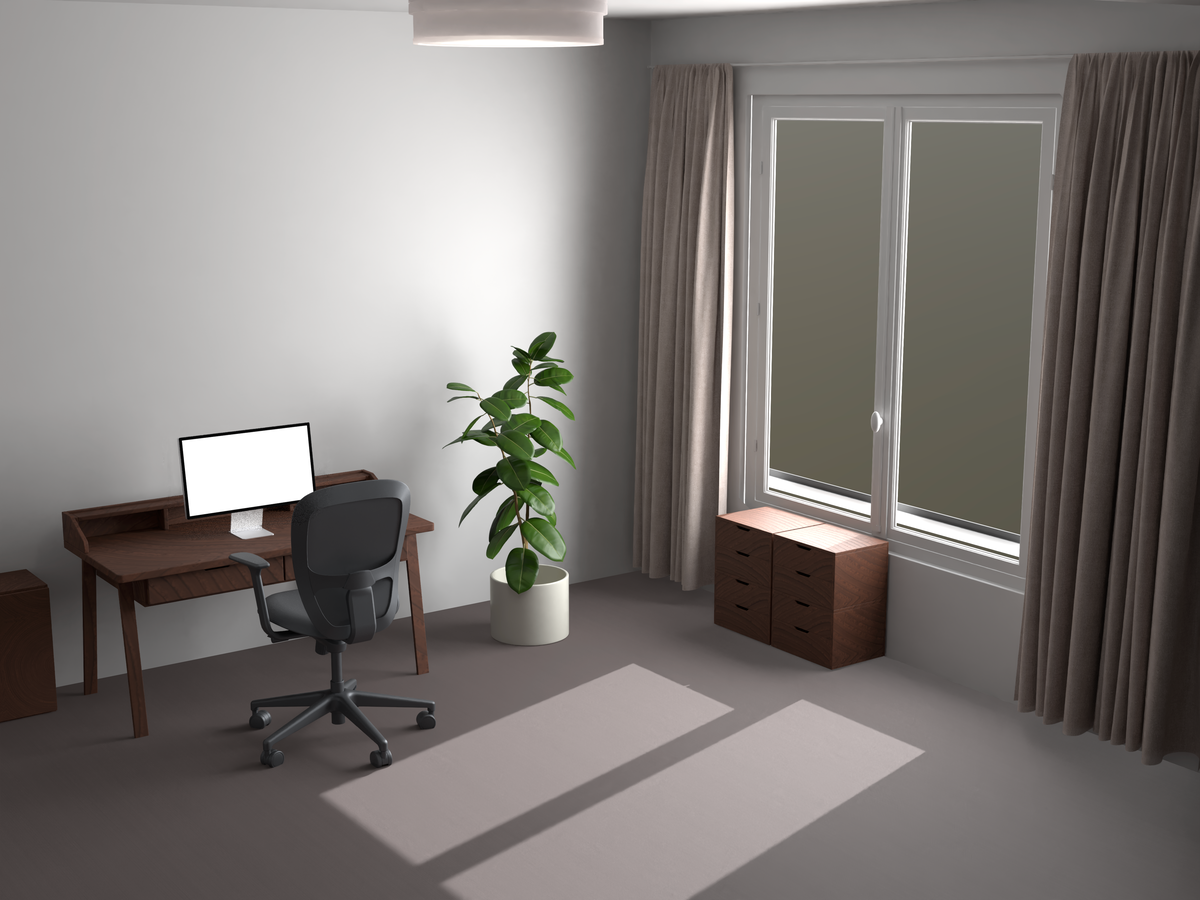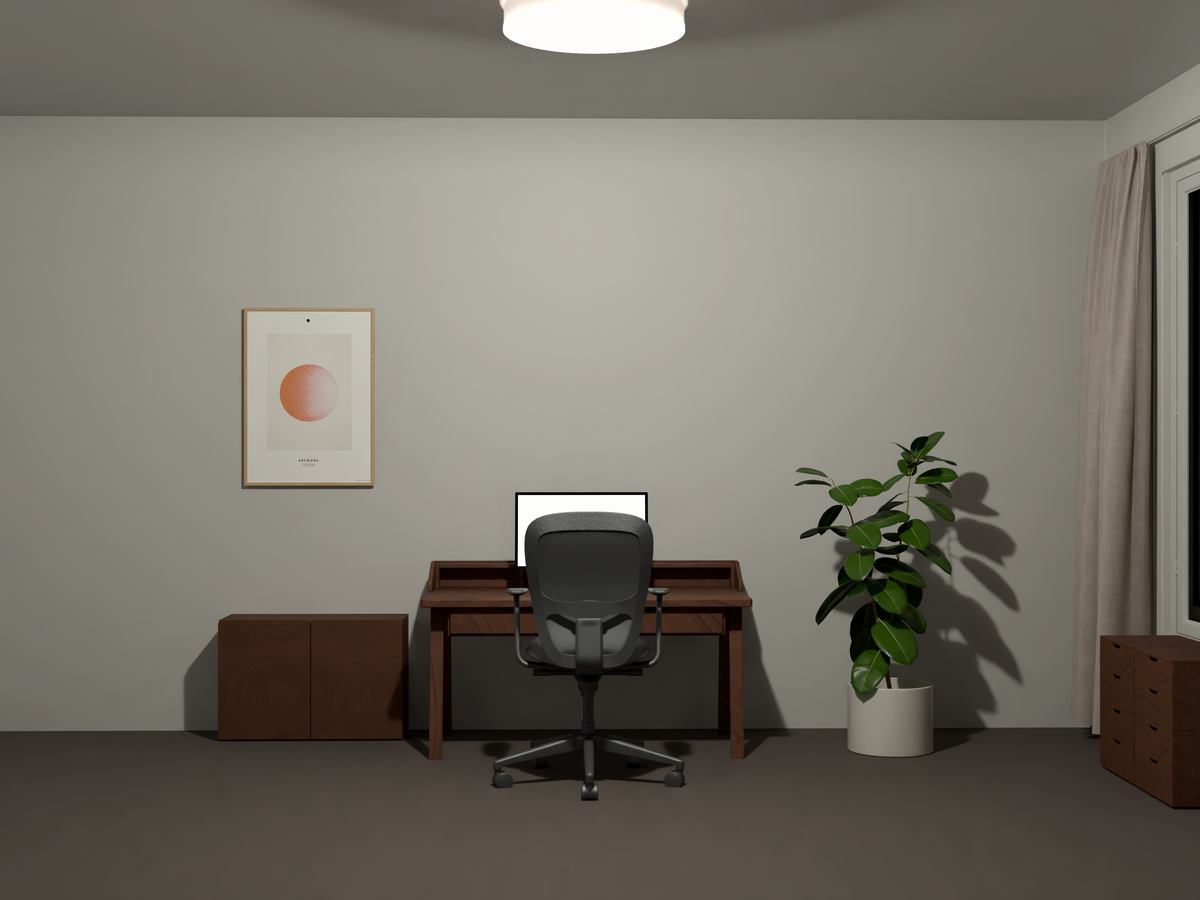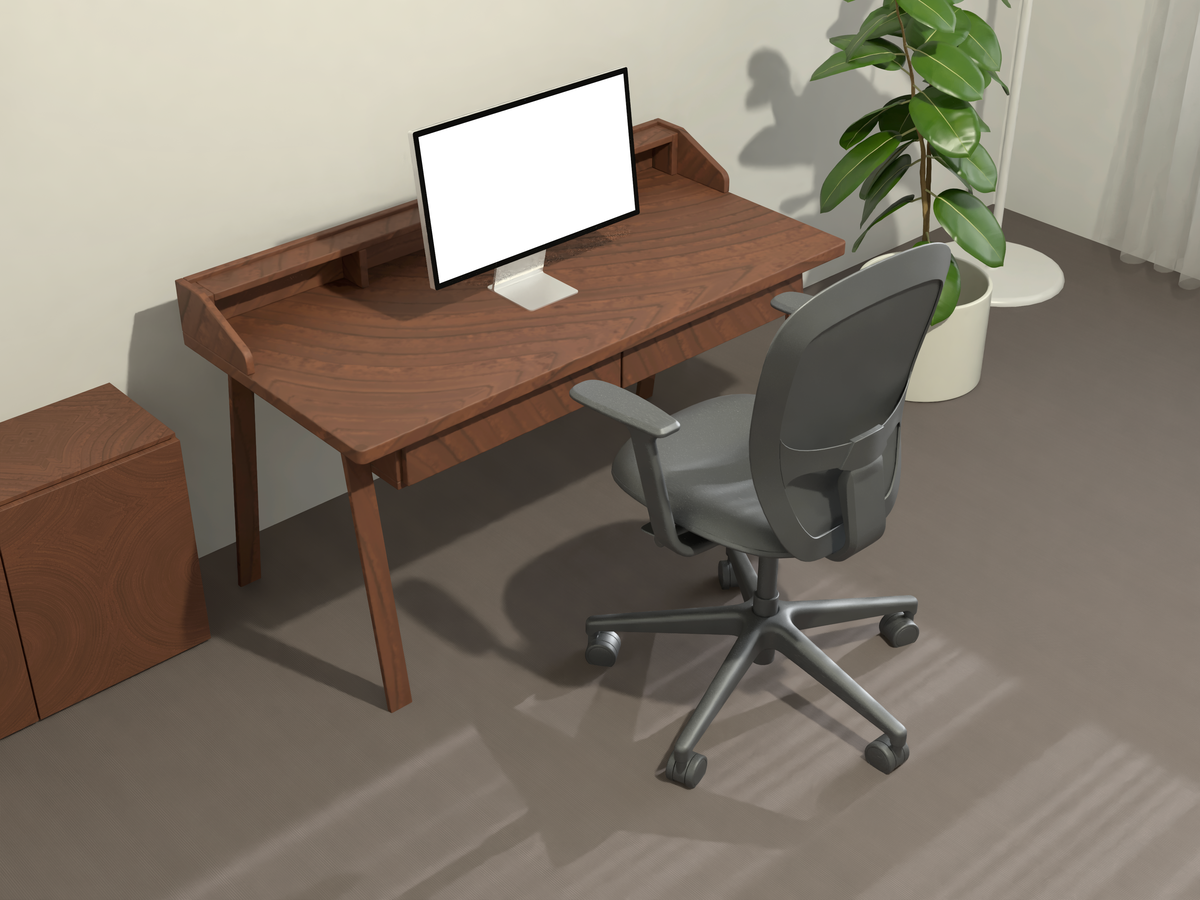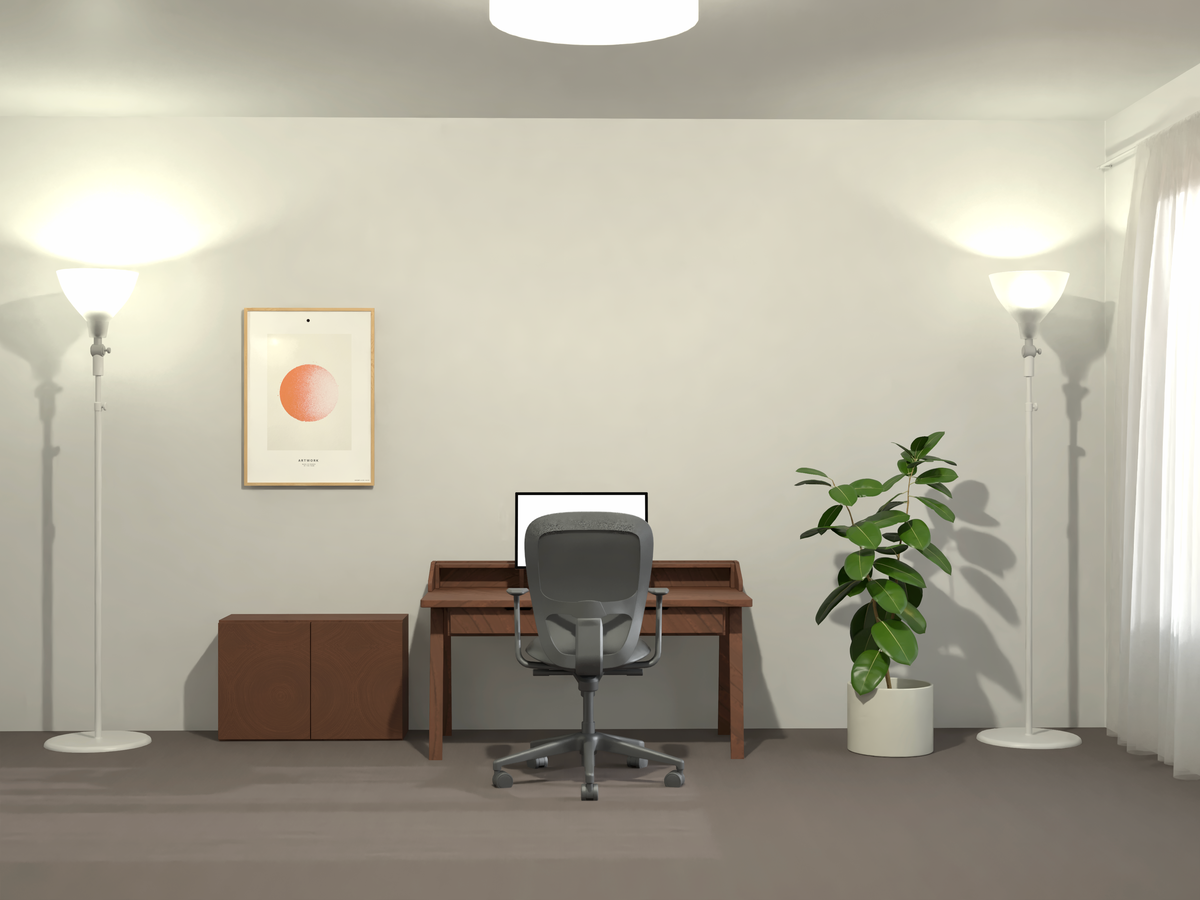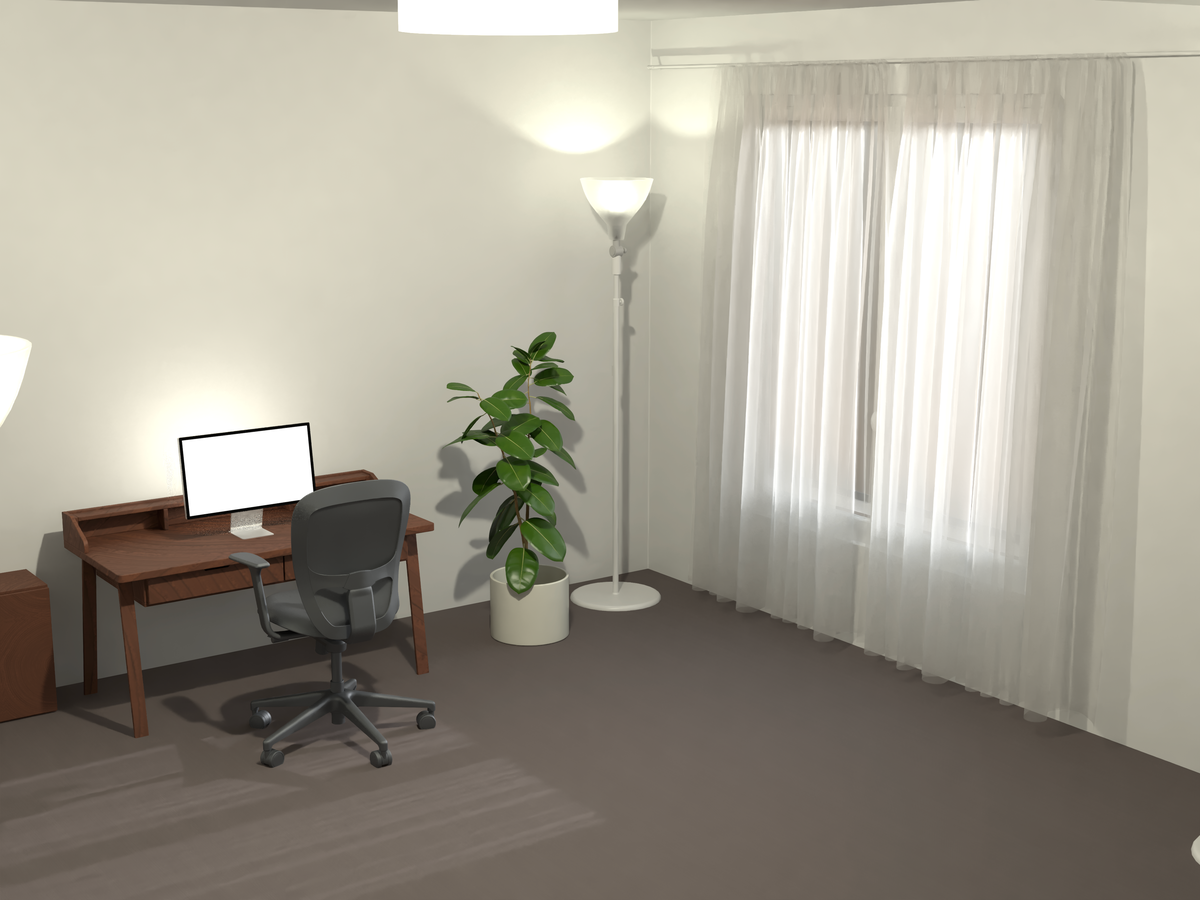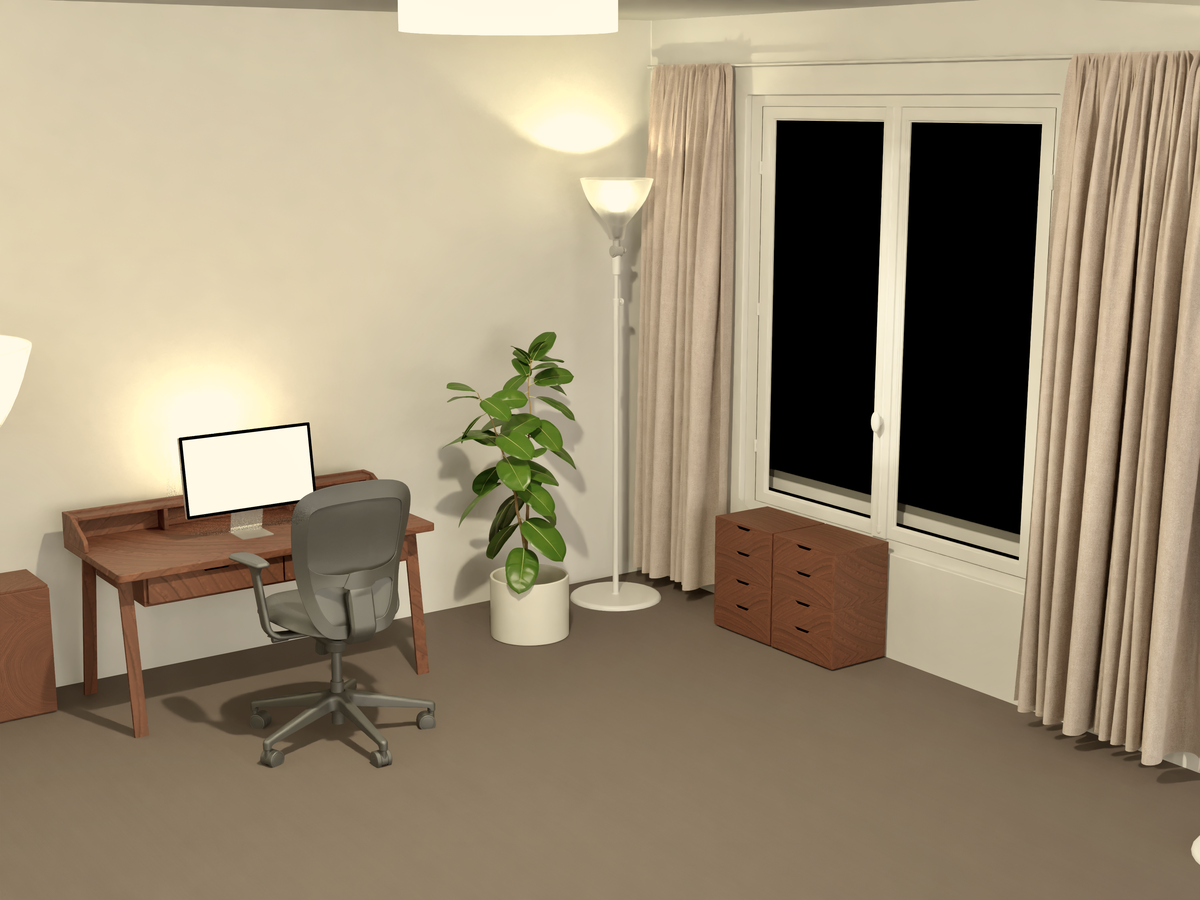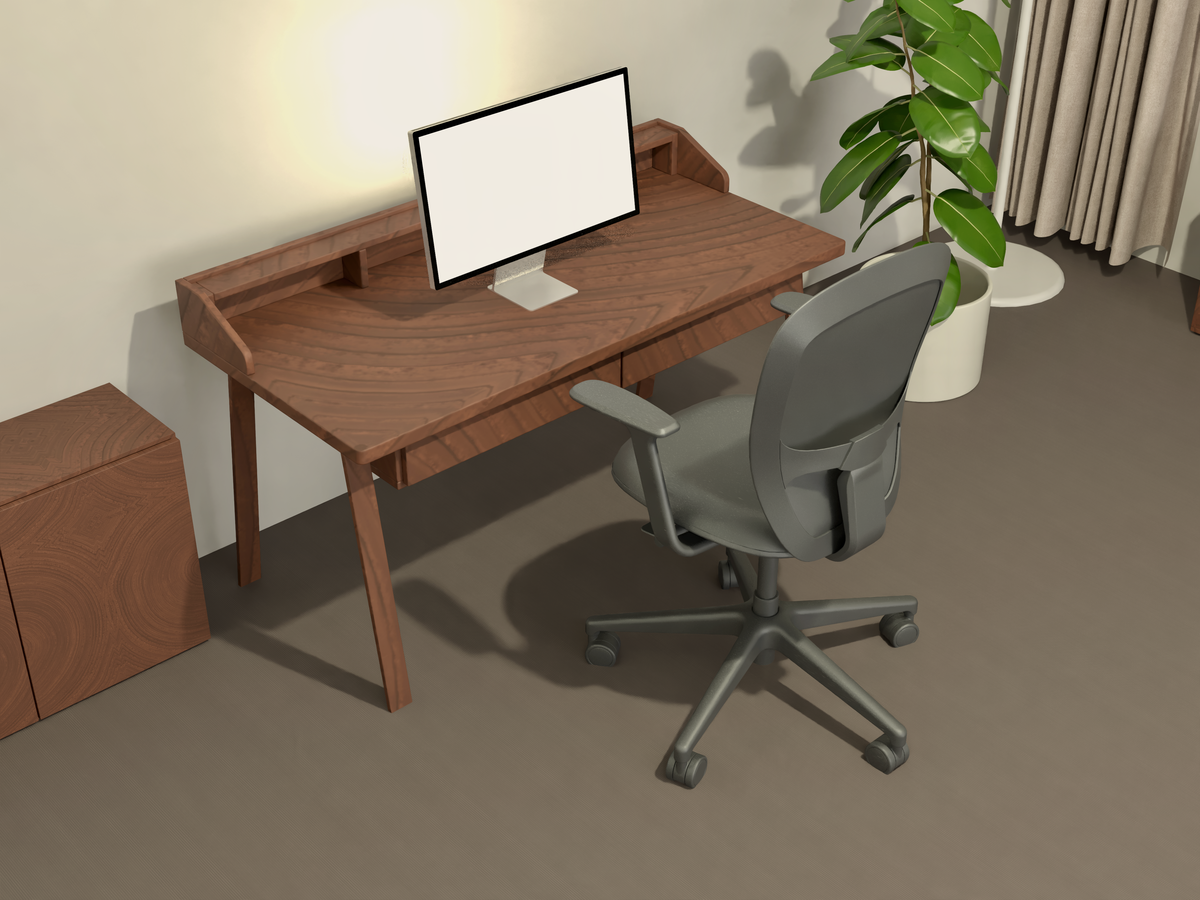
How to improve your WFH lighting to reduce eye strain
I work from home everyday, I am susceptible to eye strain, eye pain, and dizziness. Having a working environment that’s as easy on my eyes as possible is of critical importance. I hope that by sharing what I've learned, it can be helpful to you if you work from home, and like many, have experienced WFH eye strain.
Disclaimer: I'm not an ergonomist or optometrist. These tips are intended to help improve your work from home comfort based on my own personal experience.
TLDR
- An even, diffused lighting environment is best for the eyes
- When it comes to light brightness, too much is just as problematic as too little
- Use natural light wherever possible
- Quality of artificial light matters
- The best lighting for camera, is not necessarily the best lighting for ergonomics
- Even the perfect lighting environment will fatigue you — take breaks, and take care of yourself
What is it about computer screens that makes them fatiguing?
Monitor flicker
Most monitors have some level of flicker. This flickering is generally not visually noticeable, but can still be fatiguing. Monitors at lower brightness levels exhibit more flicker - as they use PWM dimming (Pulse Width Modulation). In some monitors this is done by changing the ON/OFF intervals, increasing OFF timing, and lowering ON timing — while maintaining the same brightness! This creates an awful strobe-effect, and can be very exhausting — especially when working in an environment where the monitor is the sole light source.
High contrast lighting
High contrast lighting can exist in a few different formats. It can exist as glare — that is for example light coming in from a window, into a dark room, illuminating a part of your desk. This glare is fatiguing on your eyes because they are accommodating for two levels of brightness simultaneously, while also trying to conduct tasks on a computer monitor — such as reading. High contrast can also exist in a room with bright light on the left, and darkness on the right. This is fatiguing for your eyes to compensate for.
Fixed focal distance
When working at a computer, most of the time we, and the monitor don't move significantly. We focus at the same distances for long periods of time. This causes our eye muscles to get tight and overworked. This can cause our eyes to get tired, spasm, or sometimes even make it very hard to relax our eyes. Although improved office lighting can help with this, the main way to solve for this problem is to take breaks practicing the 20/20/20 rule: Every 20 minutes, look up from your screen and focus on something approximately 20 feet away for at least 20 seconds.
My setup before
Daytime
Light in the office primarily comes in from the sun. The direct light causes glare, and because of the lack of diffusion, makes for dark corners in the room. Even with a light overhead, it's not enough to equal the amount from outside. This results in high contrast, dark spots behind the monitor, and harsh shadows. Blackout curtains are of little help because they only serve to reduce the size of the light coming in, as opposed to aiding with diffusion. Anytime it's dark outside, it's like working at night. Not fun.
Nighttime
Light primarily comes from above. Because of this single light source, it makes for harsh shadows, dark spots, and high contrast. The contrast issue is particularly apparent with the monitor, which although can be dimmed, creates a bright monitor, which also self-shades the wall behind resulting in a dark background.
My setup after
Daytime
Nighttime
What's changed
Window light sources, and filtering light
Windows now have light-filtering curtains, which helps to not only reduce the amount of light on bright days, but also to heavily diffuse the light coming in, which makes for a beautiful glow in the room. In addition, I've installed wood-blinds (not shown) behind the curtains which helps to further control the amount of light entering the office on very bright days.
Products used: Sheer curtains • Wood Blinds
Wall & ceiling lighting
Each corner of the room now has a torchiere lamp, which helps to create an even lighting environment. These lamps point directly up and light the room indirectly through reflections off of the walls and ceiling. In the center of the ceiling, a fabric wrapped light fixture provides diffused lighting. This light is dimmable and can be adjusted to match the amount of light from the standing lamps.
Products used: IKEA NOT Lamp (Discontinued but TAGARP is comparable) • Philipps Ultra Definition LED Soft White (Glass)
Desk lighting
The desk now has even lighting. The brightness of the monitor is now matched by a dimmable flicker-free backlight, which makes working at the display less fatiguing. In addition, a monitor lightbar (not shown), provides indirect light to the desk, reflected off the surface which is completely dimmable and flicker-free. These two lights together help to make for an even lighting environment during the day, and a calm and cozy environment at night. In addition to the two lights, the Apple Studio display has an ambient light sensor, which adjusts the brightness to match the ambient light, which is a game changer for light sensitive people.
Products used: BenQ ScreenBar Plus • Warm White LED Strips • WaveForm Flicker-Free LED Dimmer
Takeaways
An even, diffused lighting environment is best for the eyes. Try to balance out dark/light spots with additional lighting, and diffusing strong light sources — like the sun.
When it comes to light brightness, too much is just as problematic as too little. When dealing with too little light, add additional light sources which provide indirect, and reflective lights — such as up-lights, or torchieres, or lights that have a shade. When dealing with too much light — use blinds, sheer curtains, or light filtering curtains. If you have too much light from an artificial source, use lower wattage bulbs, or consider adding a dimmer switch.
Use natural light wherever possible. If you've got natural light, use it to your advantage. Natural light is healthier than artificial light — there's no flicker, and it can provide us with much needed vitamin D. For rooms with small windows, use mirrors to help reflect natural light and fill the room.
Quality of Artificial Light Matters. Wherever possible seek out high quality lighting that is dimmable and flicker-free. Spending a few extra dollars for these products is worth it, and it will result in less fatigue. For regular bulbs, I recommend Philipps Ultra Definition LED Soft White bulbs which have low flicker rates, glass enclosures, high color rendering index, and a relatively inexpensive pricepoint.
The best lighting for camera, is not necessarily the best lighting for ergonomics. When working from home, we spend a lot of time on video calls, and it's natural to want to look our best. Studio lights that attach to our desks, or facing a window outdoor will result in great lighting on camera, but can also cause fatigue. Consider reserving this lighting for calls, or see if generally better room lighting can result in a similar light quality on camera.
Even the perfect lighting environment will fatigue you — take breaks, and think beyond lighting! Having a great lighting environment will help you with stamina, but having good work habits like the 20/20/20 rule, and changing up posture and working environments are important in order to take the best care of your eyes, and your body. Think beyond lighting when considering ergonomics, such as room humidity (to limit dry eye), posture, chair position, and stay moving to keep blood flowing.
It may seem daunting, but I believe that with some small changes it can make a big difference. I hope this gives you new ideas to try, and I'd love to hear what you are doing in your own office as well! Cheers!


